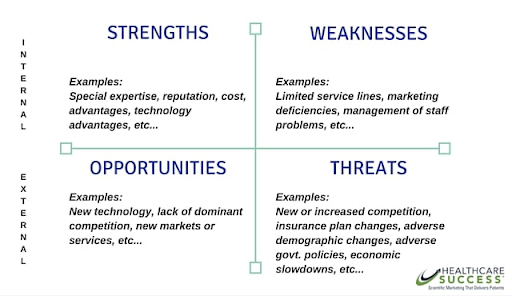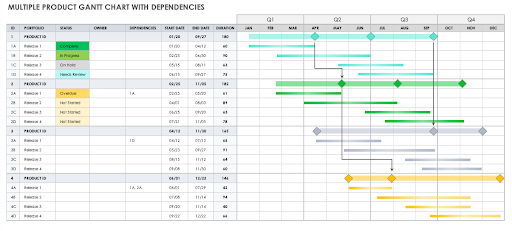The healthcare industry is undergoing a rapid digital revolution. Therefore, it’s critical for healthcare providers to ensure they keep up with the latest digital technology and trends.
However, you can’t just implement digitalization in healthcare without a foolproof plan. This is the healthcare industry we’re talking about, after all.
In this article, you’ll learn four key steps to digitalize healthcare efficiently and effectively. Let’s dive right in!
1. Assess the Current State
This is one of the key steps to digitalize healthcare. It helps healthcare facilities understand the processes, systems, and infrastructure they’re starting with and what needs to be changed.
Start by identifying the processes and technologies you use in your facility. Then, find the outdated ones that need to be replaced and those that are working well enough to be integrated into your new digital technology.
You can also collect and analyze data on the efficiency and satisfaction level of your current health systems and processes. You can get this information from various stakeholders like customers, vendors, and staff to get an all-rounded perspective. Considering sending out a survey, performing focus groups, or hosting a few one-on-one discussions.
Besides that, conduct a SWOT analysis to identify your current digital healthcare technology and processes' strengths, weaknesses, opportunities, and threats. Here’s a simplified SWOT analysis version you can follow.

Researching best practices in the industry and comparing them to yours can help you generate important insights, too. With this type of research, you can identify your weak points and potential digital solutions.
Once you’ve collected all the necessary information, the next step is evaluating the costs of these resources and creating a budget for all initial and additional expenses like maintenance.
Say you're considering SaaS healthcare software, which includes systems like healthcare CMMs software, Electronic Health Records, and HIPAA-compliant telemedicine. In evaluating costs, you must also consider how much you’ll need to keep the systems updated and other factors that boost the success of the software and healthcare organization.

2. Develop a Strategic Plan
Now it’s time to develop a strategic plan. In this step, you want to turn your goals and objectives into a concrete action plan.
Start by identifying the specific business needs driving you towards digital transformation, like improving customer experiences and efficiency. Then, establish SMART goals that align with these needs. For example, a SMART goal for the customer experience needs can be “improving patient satisfaction scores by 20% within 10 months.” Then identify in your strategic plan the tools you need to use to help you achieve those goals.
You can only tell you’re on track with your strategic plan if you have set measurable key success metrics like higher ROI or HCAHPS scores. You can also evaluate data sources like medical records, surveys, and claims to gain access to the data you require to measure your metrics.
Don’t forget to set a timeline for the goals you set, too. A solid timeline will ensure your digital transformation initiatives go as planned. To create one, start by identifying key milestones for each initiative within your strategic plan.
Then identify the dependencies in your timeline, or those that can’t begin until the completion of others. Then establish deadlines for each milestone, considering dependencies and resource constraints.
You can use Gantt charts, shown below, to simplify your timeline schedule.

Communicate the timeline to all stakeholders to keep everyone aware of the progress. It is a good practice to verify email addresses before sending your timeline. After all, you wouldn’t want sensitive information to fall into the wrong hands.
But don’t just send over your timeline and leave it at that. Your strategic plan will only work if you allocate resources and assign responsibilities to the right individuals or teams for the achievement of set goals. So, allocate the resources and tasks on an expertise and skill sets basis. This way, whoever is assigned the role can do it well.
Related: 3 Crucial To-Dos Before Beginning a Project
3. Implement and Adopt Technology
Implementing and adopting technology is a critical step in your digital transformation in healthcare.
To ensure seamless integration, you must also evaluate the compatibility of the new technology solutions with existing systems. Do this by running tests multiple times to ensure the systems are working as expected.
Once you see they are compatible, you’ll need to train your team of healthcare professionals on your new technology solutions. Make sure you include in your training sessions key factors like healthcare cybersecurity. Emphasize how the solutions will improve their day-to-day operations. This will encourage staff participation in the support initiatives.
As you’re doing this, make sure there’s minimal disruption to your day-to-day operations. You can ensure this by sticking to your deadlines specified in your strategic plan. If, based on information on the ground, meeting specific deadlines without major disruption isn’t possible, you can adjust your deadlines. Remember that the main goal is still for technological adoption to take place seamlessly. So, your deadlines should help you achieve that.
4. Continuously Evaluate and Improve
The final of the four key steps to digitalize healthcare is continuously evaluating and improving your technology solutions to stay ahead of the curve.
To regularly assess the technology solutions' effectiveness, use the key success metrics set earlier. You can also assess the effectiveness of your technology solutions by gathering feedback from your stakeholders to understand the impact of technology adoption.
You'll constantly need to identify areas for improvement and potential optimization to ensure you provide the best possible patient experiences. Let’s say your healthcare clients are still experiencing long wait times despite your new technology. You’ll need to make changes to improve efficiency and reduce patient wait times.
Also, make sure you stay current on new technology and trends. So, attend healthcare digital technology industry events like conferences, seminars, and trade exhibitions. Monitor market trends to stay informed on emerging technologies and industry changes, too. Network with your peers so you can share ideas and data-driven insights on healthcare technology.
Digital transformation is a continuous process since technology is constantly changing. When you're constantly upgrading your technology solutions to meet changing needs, you’ll deliver the best patient outcomes.

Improve Digital Transformation Initiatives at Your Healthcare Org
Digital transformation is crucial to delivering better healthcare services and patient oucomes. By following our four steps to digitalize healthcare, you can ensure you are on the right track to staying ahead of the curve in the healthcare industry.
Start by assessing the state of current technology and systems, develop a strategic plan, implement and adopt new technology, and continuously evaluate and improve your digital solutions. Remember to stay flexible so you can always meet the healthcare sector's changing technology needs and demands.
About the Author

Owen Baker is a content marketer for Voila Norbert, an online email verification tool. He has spent most of the last decade working online for a range of marketing companies. When he’s not busy writing, you can find him in the kitchen mastering new dishes.











